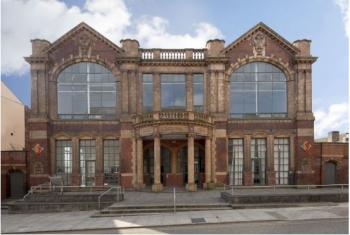Stoke School of Art
Hanley, one of the six towns of the North Staffordshire Potteries and the Stoke-on-Trent region first opened its art school in 1847. Burslem followed in 1853 but it was not until 1910 that the smaller schools in the other towns amalgamated with other two. The schools were heavily criticised by government inspectors at the end of World War I but regardless the then principal Stanley Thorogood was pleased with their achievements in problematic conditions.
They were part of the national system of art education, providing craftspeople with basic drawing and modelling skills. However, the syllabus was involved and complicated. Unusually, the Potteries art schools did not teach much pottery until the 1920’s instead such tuition was the concern of employers as the art schools gave only rudimentary training. From the early 1900’s, the Arts and Crafts Movement encouraged restructuring and introduced a more practical education necessitating awareness of materials. Whatever the most progressive way of teaching design, Hanley Art School was way behind. Regardless of Hanley and Burslem being the main art school in the Potteries, their teaching of ceramics was abysmal. An inspection of 1919 found that the Schools were lacking in all equipment at all levels.
Things gradually improved and in 1971 Stoke-on-Trent Regional College of Art was one of three colleges that were merged to form North Staffordshire Polytechnic (later renamed as Staffordshire Polytechnic and now Staffordshire University). The College of Art had achieved Regional Art College status after World War II, but its roots lay in the nineteenth century previously mentioned. Although the six towns which make up Stoke-on-Trent were a relatively small urban area, each had its own art school: those at Fenton, Hanley and Tunstall had closed by the time the Regional College of Art was created, leaving Burslem, (Fine Art and Ceramics), Longton, (Ceramics and textiles) and Stoke, (Fine Art, Graphics and Printing).
Staff and alumni associated with the above establishments included, Clarice Cliff, (Ceramicist, 1899-1972), Charlotte Rhead, (Ceramicist, 1885-1947) Arnold Machin, Susie Cooper, (Ceramicist, 1902-1995), William Bowyer, Arthur Berry and Muriel Pemberton to name but a few.
Get Unlimited Access from just £5


